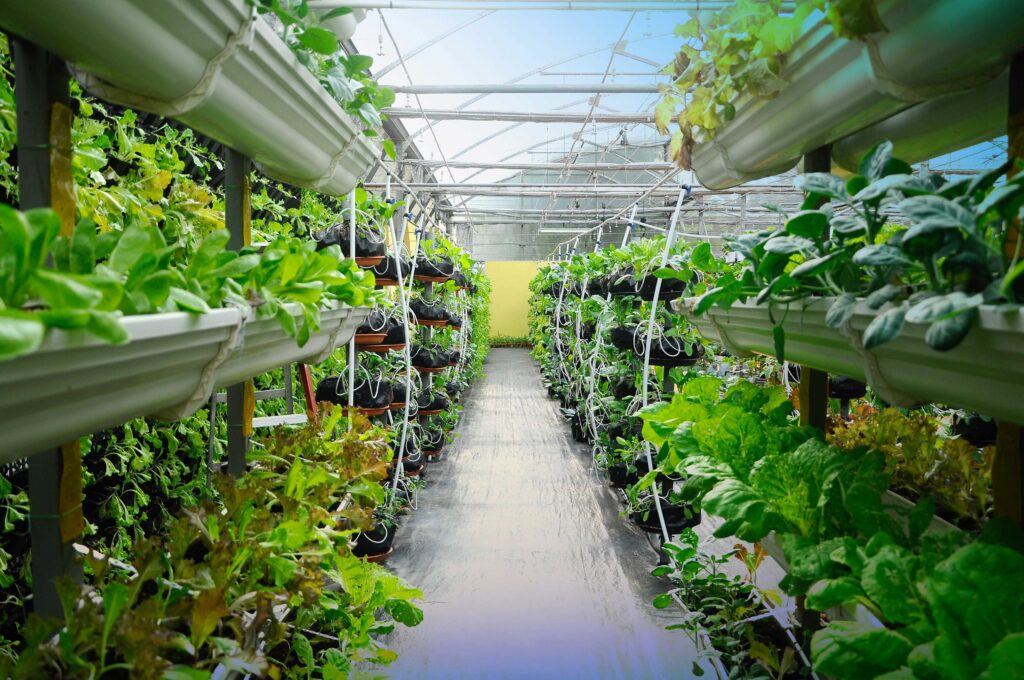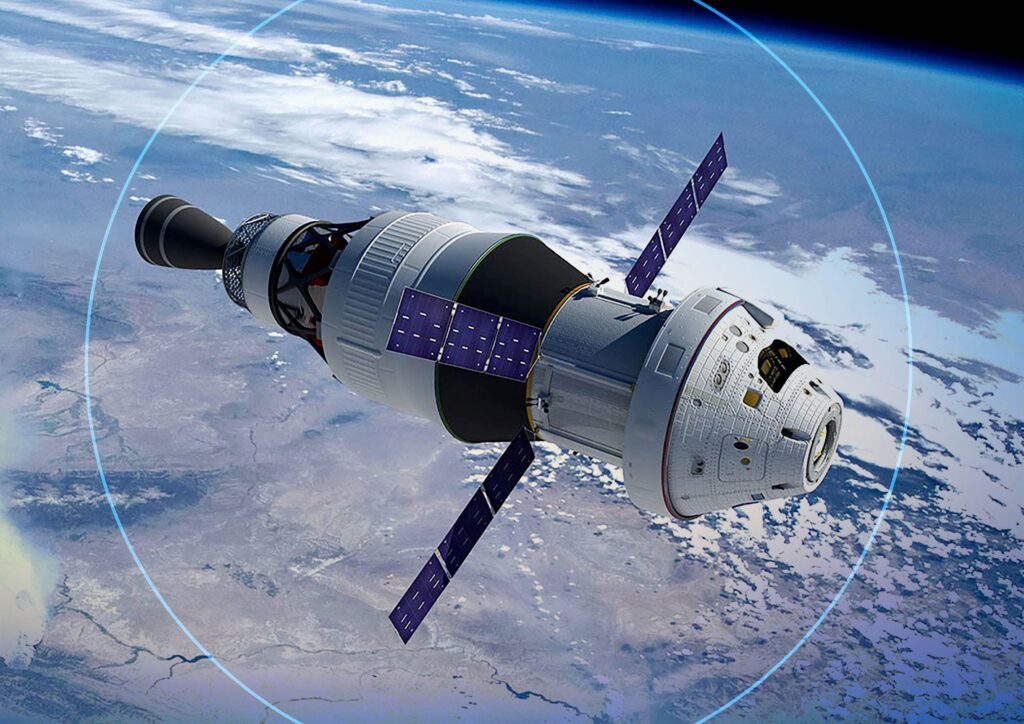Exploring the final frontier is not just about starships and astronauts, but also perhaps about lettuce and lilies.
Welcome to the intriguing world of space farming, a blend of agriculture and technology aimed at cultivating plants beyond Earth. As both the private and public sectors experiment with leveraging space for these purposes, we can see a new future for food starting to form.
What if growing vegetables in space rendered different nutritional properties than those grown on Earth? And what if plants rooted in microgravity could offer new pharmacological solutions? What if farmers could leverage satellite technology to detect crop disease?
There’s two sides to the coin: growing crops and plants in space, and leveraging space to do the same thing on Earth. From space-grown meat substitutes to low Earth orbit technology for crop management, it’s possible that the future of farming isn’t just in fields, but up in the sky.
Is it possible to farm in space?
Space farming is the practice of cultivating plants and food in the hostile environment of outer space. In recent years, interest and investment in this field has skyrocketed, and a number of companies are leaning into innovative solutions to bring agriculture up above the atmosphere.
The push for space farming has been catalyzed by several driving factors. One of the key reasons for cultivating food in space is to reduce the payload mass that must be transported from Earth. The cost of sending a single kilogram into space is staggering, so the ability to grow food on site could significantly offset the expense of long-term missions. Enabling the use of self-contained, environmentally-adaptable pods would make it possible to, say, establish colonies on Mars or the moon. These same types of biomes can be plopped onto satellites like the International Space Station, and can thus sustain plant, fruit and even cultivated meat growth for astronauts on them.

What are the benefits of growing plants in space?
Beyond the practicality of growing goods in space, the practice of space farming opens the door to new scientific discoveries.
The unique conditions of microgravity can lead to plants in space to grow in new ways, resulting in different molecular and chemical properties. These altered traits could be leveraged for a variety of applications, including pharmaceuticals and nutrition.
Vertical farming, another innovation of agriculture which can be implemented both on Earth and off it, can produce similar results. Because the cultivating process is similarly done without soil, plants simply grow differently. Produce can take on different properties, from nutrient density to flavor profiles. Karine Gosse, vice president of R&D strategy for DELMIA, recently spoke about how vertical farming can produce strawberries that are sweeter than their traditionally-grown counterparts. Because of this, when they’re added to final products like yogurt, less added sugar is required, resulting in a healthier end product.
Could growing food in space give us steaks on satellites?
The benefits of space agriculture are manifold. For astronauts on long-duration missions, fresh produce is essential for both physical and psychological well-being. The ability to grow nutritious food in space provides a source of essential vitamins and minerals, something that’s currently difficult to maintain over extended periods.
But beyond fresh fruits and vegetables are the foods that remind us of home. And while some of us might take comfort in cucumbers, for others, a burger is more where it’s at. Aleph Farms, a company at the forefront of cellular agriculture, is addressing this need.
While they didn’t start out with the goal of their cultivated meat substitute being eaten in space, it turns out that might just be where it’s headed. The company, which has been creating meat products on Earth for some time now, has already started on its journey to growing celestial steaks. Using SOLIDWORKS and a variety of other technological innovations, they’re attempting to bring the comforts of home-style food to people everywhere, both on Earth and beyond it.
By growing meat in space, Aleph Farms is providing a solution that goes beyond feeding astronauts on extended missions or individuals colonizing the moon or Mars. The insights they glean from cultivating meat in an extreme environment like space can be leveraged to prevent food insecurity here on Earth. As climates change and we experience significant changes in temperature and weather patterns, the ability to maintain livestock or crop farms in the same way we have for centuries may be affected. Incorporating technology – including those used out in space – will be a component of the agricultural toolkit to ensure farmers can maintain output.

Leveraging spatial technology for earthly agriculture
In the realm of agricultural advancements, the utilization of spatial technology is not only enhancing extraterrestrial farming practices but also proving to be a game-changer for terrestrial agriculture here on Earth. The integration of satellite precision and data analytics is transforming the landscape of farming operations, offering a myriad of benefits to farmers worldwide.
When it comes to agriculture, satellites can be remarkably helpful.
“You can basically save 20% of the water you use, if you use data from space to optimize the way you use fertilizers and water, for example,” said Helene Huby, CEO of The Exploration Company.
Huby’s company, which is part of the 3DEXPERIENCE Lab accelerator program, creates sustainable capsules for lower Earth orbit which have a variety of use cases. For agriculture, there are a few. Satellites can enable precision agriculture, which uses a data-driven method to help farmers maximize their crop yield. Surveilling acres from space allows growers to get the most accurate information possible about the health and growth of their crops and make adjustments as necessary.
The Exploration Company’s space capsules, called NYX, can also be used for transporting plants to and from Earth. In the interview, Huby spoke about how plants grown in microgravity aren’t just revolutionary in space, but back on land, too. They’re more resistant to shifts in temperature and in general are more resilient, giving rise to new innovation in industries like pharmacology, viticulture, cosmetics and more.
By leveraging the insights and methodologies derived from space-based farming initiatives, we are standing on the cusp of a revolutionary phase in precision agriculture. This transformative approach not only aims to enhance operational efficiency and minimize environmental impact but also holds the promise of bolstering global food security in the long run. Biomes on Earth or off it could be used to preserve biodiversity and improve food security. Plants grown in space are cultivated in extreme environments, and the lessons gleaned from doing so can be applied to agricultural practices back on Earth. Such knowledge could enable farmers to grow crops differently, regardless of their natural environment. From diversity of produce to new offshoots of existing plant species and beyond, space farming has the potential to provide solutions for pressing problems on Earth.
Looking to the stars for the future of farming
The advent of space farming and the integration of spatial technologies in agriculture herald a new era where the final frontier meets the timeless practice of farming. By now, it is evident that the future of agriculture does indeed have a significant outer-space component. From the groundbreaking work of companies like Aleph Farms, we see the tangible strides being made in growing food in the unique conditions of space, promising not only fresh produce for astronauts but also potentially revolutionizing nutritional science and pharmacology. Meanwhile, back on terra firma, companies like The Exploration Company are leveraging satellite technology to usher in a new era of precision agriculture, promising enhanced efficiency, reduced environmental impact, and the possibility of a more secure global food supply.
In essence, the intertwining of celestial and terrestrial farming practices underscores a future that is not confined by the boundaries of Earth’s atmosphere. Space agriculture offers innovative solutions to age-old challenges, explores unprecedented scientific frontiers, and envisions a sustainable and abundant future for food production. Whether it’s cultivating crops in the microgravity of space or optimizing farming techniques on Earth with the help of satellite data, it is clear that the future of agriculture will not only go beyond our planet but will also reshape our relationship with food, nature, and the cosmos. Agriculture represents just one aspect of the potential applications for technology in the emerging field of new space. In the years to come, a variety of industries might be housed up among the stars, and farming might just be the seed being planted to create this future.

